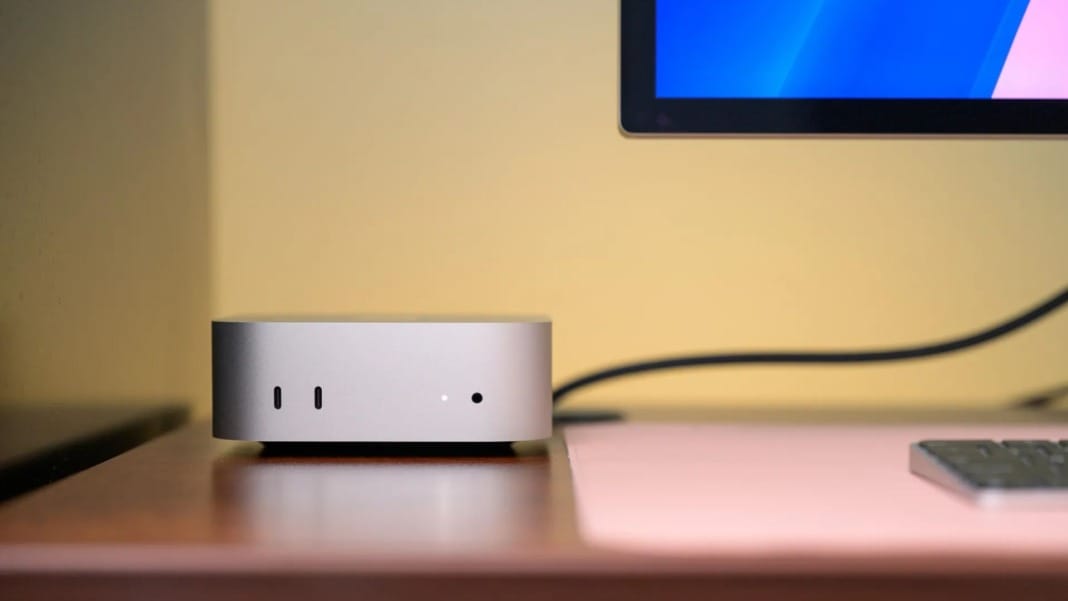Apple’s newly redesigned Mac Mini M4 has introduced a small but important change regarding storage. Unlike the previous M2 model, which had its SSD soldered directly onto the logic board, the new Mac Mini M4 now features a single removable SSD module. This marks a slight shift towards offering more flexibility, although it’s still not fully upgradeable in the way some might hope.
A step towards flexibility, but not fully upgradeable
Teardowns of the new Mac Mini, including one shared on X (formerly Twitter), confirm that the storage is now modular, making it easier to replace or upgrade than the previous M2 version. While this is a positive development for those who want to manage their storage more efficiently, it’s important to note that this doesn’t mean you can easily swap out the SSD for a much larger capacity at home. This design approach is not entirely new for Apple—similar SSD modules were seen in the Mac Studio and Mac Pro, which also used removable storage components.
Partial teardown of M4 Mac Mini /w 16GB RAM & 256GB SSD. Interesting revealation: Wifi chip & antenna on the back of bottom air intake. SSD on a daughter board. And even the base 256GB version comes in two chips. No compromise in speed. Theoretically also end user upgradable. pic.twitter.com/vA2vQwkl7J
— HG 阿聻 𓆣 𓇽 (@ohgkg) November 8, 2024
However, while the new Mac Mini M4 SSD is removable, it’s not a fully user-upgradable component. As noted by MacRumors, the storage controller is still integrated into the SoC (System on a Chip), which means the NAND chips are the only removable part. This significantly limits your ability to upgrade the storage independently, as the controller is not something you can replace or modify yourself.
Hints of possible upgrades by enthusiasts
Despite the limitations, there are hints that some enthusiasts may find a way to push the Mac Mini’s storage a bit further. In a second video clip posted on Douyin (the Chinese version of TikTok), a user demonstrated how they replaced the NAND chips on the Mac Mini’s SSD with larger ones, boosting the storage capacity to 2TB. While Apple doesn’t officially support this type of modification, it shows that it’s at least possible for some tech-savvy users to make upgrades, similar to what we’ve seen with other Apple products like the Mac Studio.
Repair shops in China can provide SSD upgrade on Day 0‼️ LOL. This dude upgraded a base 256GB SSD M4 Mac mini to 2TB. What he figured: original 256GB SSD speed, R 2000MB/s W 2900MB/s. Upgraded 2TB speed, R 3300 MB/s W 2900MB/s. Unlike in the past, little comprise in the base. pic.twitter.com/8T5SZDczWs
— HG 阿聻 𓆣 𓇽 (@ohgkg) November 8, 2024
This video was also shared by a user who claimed to have successfully got the modified system up and running. While this may open doors for potential upgrades in the future, it’s important to note that Apple’s official stance on storage upgrades will likely remain restrictive, especially with the controller still built into the chip itself.
What we know about the Mac Mini’s base storage configuration
One notable feature of the base model Mac Mini M4 is its storage configuration. The entry-level model comes with two 128GB NAND chips instead of a single 256GB chip. This change, similar to what Apple did with the M3 MacBook Air released earlier in 2024, should help avoid any significant performance issues compared to previous base models. Having two chips, rather than one, can improve overall read and write speeds so that users won’t experience bottlenecks despite the smaller storage capacity.
For many users, the 256GB of total storage in the base model will be sufficient, but it’s clear that Apple is continuing to push for higher storage configurations in its higher-end models. For those needing more space, however, the lack of fully upgradeable storage may still be a sticking point, especially for those who want to boost their storage without buying an entirely new machine.
While Apple’s new Mac Mini M4 offers a small step toward upgradeable storage, it’s still not as flexible as some users might want. The removable SSD is a welcome change, but the fact that the storage controller is embedded within the SoC limits your options for upgrades and repairs. As always, Apple’s approach to hardware remains more restrictive than some would like, but the possibility of enthusiasts tweaking hardware could still offer some workarounds for those willing to experiment.





